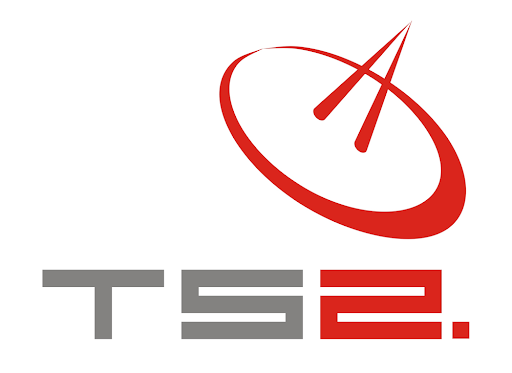Global FinTech Developments – June–July 2025

In June and July 2025, the FinTech sector saw significant developments worldwide. This report covers major news in digital payments and neobanking, key regulatory shifts and government initiatives, notable corporate moves (M&A, funding, IPOs), emerging technology trends, expert outlooks, and commentary from industry leaders. All information is cited with sources and dates for reference.
Digital Payments and Neobanking News (Global)
- European Expansion of Instant Payments: UK-based fintech Revolut partnered with the European Payments Initiative (EPI) to integrate EPI’s digital wallet Wero into the Revolut app for customers in France, Belgium, and Germany fintechfutures.com. Launched in 2024, Wero enables instant account-to-account transfers and already has over 40 million users, with plans to add e-commerce payments by late 2025 fintechfutures.com. This move gives Revolut users access to real-time euro payments and aligns with Europe’s push for homegrown payment networks (announced June 26, 2025) fintechfutures.com fintechfutures.com.
- Nordic Bank Partnerships: Lunar, a digital bank in the Nordics, struck partnerships with Visa-owned core banking platform Pismo and with Wise Platform to enhance its payment services (announced June 2025) fintechfutures.com fintechfutures.com. Lunar will use Pismo’s cloud platform for Visa card issuing and Wise’s technology for global transfers, becoming the first Nordic bank to adopt these solutions and improving cross-border payment offerings fintechfutures.com fintechfutures.com.
- Account-to-Account Payments by Card Networks: In the UK, Visa launched a new “Visa A2A” pay-by-bank service in early June 2025. Visa A2A leverages real-time bank transfers via the Faster Payments network, giving businesses faster settlement and better cash flow visibility hoganlovells.com. Future phases will extend Visa A2A to e-commerce payments in the UK hoganlovells.com. Similarly, at Money20/20 Europe (June 3–5, 2025), Mastercard and Deutsche Bank unveiled a partnership to offer account-to-account “Pay by Bank” payments to merchants across Europe, integrating Mastercard’s open banking tech into Deutsche Bank’s systems thefintechtimes.com thefintechtimes.com. “With this partnership… we’re shaping a future where account-based payments become the new norm,” said Mastercard executive Valerie Nowak (Money20/20 Europe, June 5, 2025) thefintechtimes.com.
- Cross-Border Payment Expansion: Uruguay-based fintech dLocal obtained new payment licenses in the UAE, Turkey, and the Philippines to expand its cross-border payments network (announced June 2025) fintechfutures.com. The UAE license lets dLocal facilitate local pay-ins and pay-outs, the Turkey authorization allows partnering with a domestic fintech for international payments, and the Philippine license enables direct remittances – all steps to broaden dLocal’s emerging markets footprint fintechfutures.com fintechfutures.com. In the UK, the Post Office signed a long-term deal with Western Union (June 2025) to offer international money transfer services at over 11,500 branches fintechfutures.com. Western Union will greatly extend its reach in the UK, allowing customers to send funds from Post Office locations to 200+ countries fintechfutures.com.
- Neobanks Entering New Markets: Europe’s largest neobank Revolut is set to enter Latin America by acquiring Banco Cetelem Argentina (announced late June 2025). Through this deal, Revolut will gain a local banking license in Argentina, enabling it to offer savings, investments, multi-currency accounts, and credit products tailored to Argentinians fintechfutures.com fintechfutures.com. In Asia, Paytm (India’s leading digital payments firm) signaled international ambitions by appointing a new CEO for its Middle East operations in July 2025, leveraging its Indian fintech expertise to expand in that region (TechInAsia, July 2025).
- Other Notable Launches: At Money20/20 Europe, startups showcased innovations like stablecoin payment solutions (e.g. UK-based BVNK partnering with LianLian Global to bring real-time USD stablecoin payments to merchants in 100+ countries thefintechtimes.com thefintechtimes.com) and open-loop transit payments (Finland’s Enfuce and Dutch platform Shuttel launched a Visa-powered mobility payment card for fuel/charging/parking in the Netherlands thefintechtimes.com). Also in June, UK fintech allpay launched DOSH, a prepaid Mastercard account aimed at serving unbanked consumers with flexible ID requirements and financial literacy tools hoganlovells.com hoganlovells.com, reflecting a continued focus on financial inclusion.
Regulatory Updates and Government Initiatives
United States: In mid-June, the U.S. Senate passed the “GENIUS Act” (Guiding and Establishing National Innovation for U.S. Stablecoins Act), moving the country closer to a regulatory framework for stablecoin issuers hsfkramer.com. The bill (awaiting House approval) would establish oversight for stablecoin operators akin to banks, aiming to protect consumers and financial stability. U.S. lawmakers have also advanced several bills to modernize financial regulations. In late May, the House Financial Services Committee approved measures to ease IPO processes for fintechs and tailor bank regulations by risk profile pymnts.com pymnts.com. These include the Encouraging Public Offerings Act (expanding “testing the waters” outreach before IPO filing) and the Helping Startups Continue to Grow Act (raising the “emerging growth company” threshold to $3 billion revenue and extending simplified reporting up to 10 years) pymnts.com pymnts.com. The House also advanced the TAILOR Act, directing regulators to customize compliance requirements to each institution’s risk and business model, which could reduce burdens on fintech-bank partnerships pymnts.com pymnts.com. (Sources: U.S. Senate/House updates, June 2025)
European Union: EU policymakers took steps to update fintech regulations. On June 18, 2025, the EU Council’s committee of ambassadors (Coreper) approved proposals to modernise the Payment Services Directive (PSD2), paving the way for PSD3 hsfkramer.com hsfkramer.com. The planned Payment Services Regulation will introduce tougher anti-fraud mandates – for example, requiring payment providers to share fraud data and verify payee names against IBANs before transfers (to combat misdirected payments) hsfkramer.com. It also seeks greater transparency in ATM fees and card payments, and opens the door for new fintech payment initiators to enter the market hsfkramer.com. These updates (once finalized by EU Parliament and Council) aim to strengthen consumer protection and competition in digital payments. Separately, an EU Parliament-commissioned report in June examined the rise of USD-pegged stablecoins and their risks to EU monetary sovereignty. The report urged that “retail and wholesale CBDCs and faster payment systems be promoted as alternatives to stablecoins,” and cautioned regulators against premature equivalence deals with other jurisdictions’ stablecoin rules hsfkramer.com. It also noted the U.S. GENIUS Act’s progress, underscoring that USD stablecoins could pose “severe risks for third countries” under current policies hsfkramer.com hsfkramer.com.
United Kingdom: U.K. authorities launched new initiatives to balance innovation and risk. The Financial Conduct Authority (FCA) in June opened applications for a “Supercharged Sandbox” to let fintech firms safely experiment with AI in financial services (announced June 9, 2025) osborneclarke.com. This sandbox provides a controlled environment for piloting AI-driven products under regulatory oversight, part of the UK’s strategy to speed up fintech innovation while managing AI risks. U.K. regulators are also actively consulting on crypto-asset rules – for example, the FCA in late May proposed prudential and custody standards for stablecoin issuers and crypto firms (comment period through July 31, 2025) osborneclarke.com osborneclarke.com. In Parliament, the Data (Use and Access) Act 2025 received Royal Assent on June 19, introducing new consumer data-sharing rights and competition measures (notably supporting open finance and easier switching) hsfkramer.com hsfkramer.com. These efforts coincide with Bank of England officials signaling a cautious stance on digital money: in a June 18 speech, BoE Governor Andrew Bailey reiterated that if digital payment tech yields benefits, he prefers to realize them via “tokenised deposits” (commercial bank money) rather than a retail central bank digital currency, and noted many stablecoins still fail to fully meet standards of monetary soundness hoganlovells.com hoganlovells.com.
Asia and Emerging Markets: Several governments enacted fintech-friendly frameworks:
- Hong Kong passed a new Stablecoins Bill in May 2025 establishing a licensing regime for stablecoin issuers hkma.gov.hk. Once in effect (expected by end of 2025), any issuer of a fiat-pegged stablecoin in Hong Kong (or referencing HKD globally) must be licensed by the HKMA and meet strict requirements on reserve assets, redemption at par, asset segregation, AML/CFT compliance, risk management, and audits hkma.gov.hk hkma.gov.hk. “The Ordinance adheres to the ‘same activity, same risks, same regulation’ principle…laying a solid foundation for Hong Kong’s virtual asset market,” said Hong Kong’s Financial Services Secretary Christopher Hui hkma.gov.hk. Hong Kong’s central bank chief Eddie Yue added that the “robust, risk-based” regime will support “healthy, sustainable” growth of Hong Kong’s digital asset ecosystem hkma.gov.hk. To foster cross-border payments, the People’s Bank of China (PBoC) and HKMA jointly launched the “Payment Connect” on June 22, 2025, linking mainland China’s IBPS and Hong Kong’s Faster Payment System hsfkramer.com hsfkramer.com. This allows instant, low-value transfers by simply using a mobile or account number, deepening financial integration between Hong Kong and the Mainland hsfkramer.com hsfkramer.com. In addition, Hong Kong’s regulators held policy dialogues with Shanghai in June, agreeing to collaborate on fintech innovation (e.g. exploring wholesale CBDCs) as part of a new cross-city Action Plan hsfkramer.com hsfkramer.com.
- Vietnam officially launched a FinTech Regulatory Sandbox on July 1, 2025 (per a government decree) allenandgledhill.com. The sandbox allows banks and fintech startups to test new products under relaxed regulations for a limited time. Initially it covers P2P lending, credit scoring, and open APIs in banking, with strict eligibility criteria (firms must be established in Vietnam, meet experience and governance standards, etc.) allenandgledhill.com allenandgledhill.com. Vietnam aims to use sandbox results to craft permanent fintech regulations while ensuring consumer protection during tests allenandgledhill.com allenandgledhill.com.
- India: Regulators maintained a zero-fee approach to digital payments – the Finance Ministry in June refuted rumors of new UPI transaction fees, reaffirming that India’s instant bank transfer system will remain free to users (Reuters, June 11, 2025). Meanwhile, India’s central bank continued tightening oversight of fintech lenders and crypto, and Paytm faced a notice from the financial crime agency over alleged forex compliance issues (July 2025) as the country refines its digital payments governance.
- Middle East: Dubai launched a pilot for tokenized real-estate investments (announced May 25, 2025) allowing investors to buy fractional property shares on a regulated platform, with support from the Dubai Land Department and UAE’s digital asset regulators hoganlovells.com hoganlovells.com. And in Kazakhstan, the central bank announced plans in May to regulate digital asset trading and create its own fintech sandbox, signaling the spread of fintech regulation to new markets hoganlovells.com.
Key Corporate Activities: M&A, Funding, and IPOs
FinTech Mergers & Acquisitions
Consolidation continued as established players acquired tech capabilities and entered new markets. In June 2025, several high-profile fintech M&A deals were announced:
- Stripe’s Crypto Push: U.S. payments giant Stripe agreed to acquire Privy, a New York-based crypto wallet infrastructure startup, to bolster Stripe’s digital asset services (deal announced June 2025) fintechfutures.com fintechfutures.com. Privy specializes in embedded crypto wallets via API, and Stripe CEO Patrick Collison said connecting Privy’s wallets to Stripe’s payment network will enable “a new generation of global, internet-native financial services” fintechfutures.com.
- Xero’s $2.5B Fintech Purchase: New Zealand’s accounting software leader Xero made a major fintech buy, acquiring Melio (a U.S. B2B payments platform) for $2.5 billion fintechfutures.com fintechfutures.com. Melio serves ~80,000 small businesses with digital accounts payable/receivable tools and processed over $30 billion in the past year fintechfutures.com fintechfutures.com. The acquisition, announced June 2025, will let Xero offer integrated bill payments and cashflow management to its SME customers, funded through a mix of equity, debt, and cash fintechfutures.com fintechfutures.com.
- Payments Firms Expand Globally: U.S.-based processor Shift4 acquired Smartpay (an Australian/NZ POS and payments provider) for $180 million to enter the Australasian market fintechfutures.com fintechfutures.com. The deal, expected to close by Q4 2025, gives Shift4 access to Smartpay’s 40,000 merchant clients and local acquiring licenses in Australia fintechfutures.com fintechfutures.com. And as noted, Revolut purchased Argentina’s Banco Cetelem (owned by BNP Paribas) to jump-start its Latin America expansion fintechfutures.com fintechfutures.com – an unusual case of a fintech buying a traditional bank to obtain a license and customer base.
- Banking Sector Deals: In Europe, French banking group BPCE agreed to buy Portugal’s Novo Banco (75% stake from U.S. PE firm Lone Star) for €6.4 billion fintechfutures.com. While a traditional bank deal, it underscores continued interest by large banks in consolidating regional lenders (deal to close in 2026) fintechfutures.com. And in the wealth tech space, investment platform Envestnet sold its open-banking subsidiary Yodlee to private equity firm STG (announced June 26, 2025) fintechfutures.com – reflecting a trend of big fintech units being spun off for focused growth.
Other noteworthy June deals included Stripe’s rival PayPal reportedly exploring acquisitions to expand its fintech portfolio (industry rumors), and Australian paytech Eftsure buying French startup Sis ID to add international payment fraud prevention capabilities fintechfutures.com fintechfutures.com. The bustling M&A activity suggests fintechs are leveraging buyouts to obtain new technologies and enter new geographies rather than building in-house, a strategy many analysts expect to continue finovate.com.
Venture Funding Rounds
FinTech funding showed signs of revival in mid-2025, with several large capital raises after a slower 2024. In June 2025 alone, numerous fintechs worldwide announced major funding rounds fintechfutures.com fintechfutures.com:
- U.S. spend-management startup Ramp raised $200 million in a Series E round at a hefty $16 billion valuation fintechfutures.com (lead: Founders Fund, announced June 30, 2025). Ramp’s valuation nearly tripled in 18 months (from $5.8B in 2023) as it continues rapid growth in the corporate card and expense management space fintechfutures.com.
- Amsterdam-based SME banking fintech Finom secured €115 million (≈$125 M) in a Series C led by AVP (Announced late June 2025) fintechfutures.com. Finom provides digital business accounts and financial tools for small businesses across Europe. Notably, existing investor General Catalyst had just injected €92 million a month prior via a special fund, signaling strong confidence in European B2B fintech fintechfutures.com fintechfutures.com.
- In the U.S., real-estate investment platform Juniper Square landed $130 million (Series D led by Ribbit Capital) at a $1.1 billion valuation (June 2025). The funding will fuel its development of “JunieAI,” an AI-driven solution for private markets investors fintechfutures.com fintechfutures.com – exemplifying the trend of fintechs raising capital to embed AI capabilities.
- New York-based Kashable, which offers employer-based installment loans, closed a $250 million credit facility led by Nomura in June to expand affordable workplace lending fintechfutures.com. Since 2013, Kashable has funded nearly $1.5 billion in loans to about 4 million employees fintechfutures.com.
- Dozens of smaller deals also took place. For example, U.S. startup Spinwheel (debt API for student loans) raised a $30 million Series A (July 1, 2025) fintechfutures.com, and UK-based auto finance fintech Carmoola secured a £300 million asset-backed facility from NatWest (June 30) to ramp up its car loan volumes fintechfutures.com. Globally, H1 2025 venture reports showed fintech investment picking up from 2024 lows, with Southeast Asia’s tech sector raising $2 billion in H1 (including notable fintech deals) albeit still below 2021 peaks (Crowdfund Insider, July 2025).
IPOs and Public Market Moves
After a dry spell in 2022–2024, fintech IPOs are returning in 2025. June–July 2025 saw landmark public listings and renewed investor appetite:
- Chime’s Successful IPO: U.S. neobank Chime went public in June 2025, achieving a strong debut that signaled renewed confidence in digital banks. Investors viewed Chime’s successful IPO – the first major neobank listing in years – as evidence that the fintech fundraising drought had begun to reverse pymnts.com. Chime’s offering (reportedly at a multibillion valuation) emboldened other large fintechs considering the public markets pymnts.com.
- Circle Goes Public: Circle Internet Financial, issuer of the USDC stablecoin, officially launched its IPO in May 2025 after years of delays finovate.com. Circle had previously attempted to go public via SPAC in 2021 (at a $9B valuation) before regulatory hurdles derailed that plan finovate.com. Its revived IPO will provide capital to expand internationally and develop new tokenized finance products, as Circle competes with both traditional networks and crypto-native rivals finovate.com. Circle’s listing also comes amid increasing regulatory clarity for stablecoins in the US, giving public-market investors more comfort.
- Klarna Preps for IPO: Swedish “buy now, pay later” pioneer Klarna is preparing to go public (likely later in 2025) and has been pivoting to a full-service neobank model ahead of the listing finovate.com. In Q2 2025, Klarna rolled out new products beyond BNPL – including a Visa-backed debit card in the US and even a $40/month mobile phone plan (via AT&T’s network) – to rebrand itself as a digital bank rather than just a BNPL firm finovate.com. It also launched savings accounts in the US (its largest market) after offering deposits in Europe pymnts.com. This diversification comes amid pressure on Klarna’s core BNPL profits and investor scrutiny of its sustainability. “Klarna’s pivot is not just about growth. It’s really survival in a market which is no longer defensible [with pure BNPL],” commented PwC’s Liam Evans on the strategy pymnts.com. Klarna’s CEO Sebastian Siemiatkowski has even started referring to the company as a “neobank” rather than an AI-driven BNPL app, indicating the branding shift pymnts.com. The IPO window reopening (buoyed by Chime’s success) likely factored into Klarna’s timing pymnts.com pymnts.com.
- Other Prospective Listings: A number of other large fintechs are rumored or slated to seek public listings in late 2025 or 2026 if market conditions hold. According to industry reports, Stripe (valued ~$50B) remains a closely watched IPO candidate, as do Latin American giant Nubank, UK-based Revolut, and blockchain firm Circle (now on its way). In fact, fintech analyst Amias Gerety noted 2025 could become “the year of fintech IPOs” if market momentum continues (FintechNomad, June 2025). We’ve already seen a “wave of notable developments, including IPO filings” this quarter, Finovate reported finovate.com finovate.com. For example, eToro (social trading platform) and Better.com (online mortgage lender) have taken steps toward U.S. listings, and Indian merchant-payments firm Pine Labs filed for an IPO in Mumbai aiming for a $6 billion valuation (The Paypers, July 2025).
- Shareholder Exits: Some strategic investors trimmed stakes in fintech leaders, which can foreshadow public float changes. Notably, China’s Ant Group sold a 4% stake in Paytm (India’s top digital payments company) via a $246 million block trade in May fintechfutures.com. This reduced Ant’s holding in Paytm from ~10% to ~6% fintechfutures.com, following Ant’s gradual withdrawal and Paytm founder Vijay Shekhar Sharma increasing his stake fintechfutures.com fintechfutures.com. Around the same time, Warren Buffett’s Berkshire Hathaway completely exited Paytm (selling its ~$165M stake in late 2023) fintechfutures.com. These moves indicate early investors capitalizing on fintech valuations as they mature, and could improve the companies’ public float and governance (Paytm is already publicly listed in India).
Overall, the public market outlook for fintech improved markedly by mid-2025. As one report noted, “with Circle and Chime going public, plus other players signaling intent, public listings may regain momentum” in the second half finovate.com. This marks a stark change from 2022–23 when high inflation and rate hikes had shut the IPO window. If market sentiment stays positive, we may see more “fintech unicorns” transition to the public markets in the coming quarters, providing liquidity to investors and raising fresh capital for expansion.
Emerging Trends and Innovations in Financial Technology
Across June–July 2025, a few key trends and innovations stood out:
- Stablecoins and Digital Currencies Go Mainstream: There is accelerating momentum behind stablecoins and central bank digital currencies (CBDCs) in payments. At Money20/20 Europe (June 2025), industry leaders highlighted that stablecoins have moved from the periphery toward mainstream finance europe.money2020.com. Multiple announcements underscored this: Circle’s IPO (USDC issuer) aims to fund global expansion finovate.com; Hong Kong’s new law will formally regulate stablecoins hkma.gov.hk; and fintechs are increasingly integrating stablecoins for cross-border use (e.g. LianLian Global’s partnership to enable USD stablecoin settlements for merchants thefintechtimes.com thefintechtimes.com). Meanwhile, central banks are advancing digital currency projects – the ECB’s digital euro lead spoke at Money20/20, and China’s PBoC launched the cross-border Payment Connect while exploring wholesale CBDC links hsfkramer.com. The upshot is a convergence of traditional and crypto finance: tokenized deposits and regulated stablecoins are emerging as alternatives to card networks for faster, lower-cost payments. Observers predict many firms will jump into facilitating stablecoin payments and tokenized assets, especially as regulatory clarity improves finovate.com finovate.com. (For example, in Dubai’s pilot, real estate shares are tokenized on a blockchain but transacted in local currency, combining fintech innovation with regulatory oversight hoganlovells.com hoganlovells.com.)
- Open Banking and Real-Time Payments: The global shift toward open banking and account-to-account (A2A) payments continues to gain traction. In Europe and the UK, open banking-powered payments are being rolled out by major players – Mastercard’s partnership with Deutsche Bank will let online merchants accept A2A bank payments across the EU (a potentially cheaper alternative to card networks) thefintechtimes.com thefintechtimes.com. Visa’s launch of A2A Pay by Bank in the UK similarly leverages bank rails for instant payments at checkout hoganlovells.com. The trend is not limited to Europe: in the U.S., the Fed’s FedNow real-time payment service (launched 2023) saw growing bank adoption by mid-2025, and in Latin America, countries like Brazil (with Pix) and Mexico (CoDi) report surging instant payment volumes. The theme of “pay by bank” – using bank accounts directly for payments – is becoming a viable complement to cards and wallets globally. This is enabled by open banking APIs and supported by regulators (e.g. EU’s PSD3 proposals include provisions to strengthen third-party payment initiation services) hsfkramer.com. It also ties into open finance data sharing: banks and fintechs are collaborating to deliver more integrated financial services (for instance, the Plaid–Experian partnership in June combined bank data with credit bureau data for better credit access and fraud detection finovate.com finovate.com).
- Artificial Intelligence in FinTech: AI is playing an increasingly prominent role in financial services, from customer service chatbots to fraud prevention and credit underwriting. This was evident in both industry discourse and product launches. Money20/20 panels discussed AI’s fast-growing impact on fraud detection, identity verification, and personalized finance recommendations europe.money2020.com. In June, data network Plaid launched Plaid Protect, an AI-powered fraud prevention tool leveraging bank transaction patterns and identity signals to block scams in real time finovate.com finovate.com. Many fintechs are investing in “agentic AI” – autonomous decision-making systems – to improve efficiency. Boston Consulting Group (BCG) predicts that AI-native fintech startups will lead the next wave of innovation and “bring about radical changes in productivity” for financial firms bcg.com bcg.com. However, there is also caution: a CFO survey (PYMNTS, June 2025) found 85% of enterprise finance chiefs view “agentic AI” as still unproven or “a question mark” for immediate ROI. Regulators are watching closely too – the UK’s FCA “Supercharged Sandbox” is specifically designed to supervise AI experiments in fintech osborneclarke.com. Net-net, AI is seen as a transformative force, and mid-2025 saw a surge in AI-related fintech initiatives (e.g. Juniper Square’s “JunieAI” for private markets, Wells Fargo testing an AI mortgage bot, etc.), but the industry is working out standards for responsible AI deployment.
- “Buy Now, Pay Later” Evolves or Matures: The BNPL boom of past years has tempered, and leading BNPL providers are adapting their models. Klarna’s aforementioned evolution into broader banking is a prime example – facing thin margins and rising credit losses in BNPL, it introduced upfront payment options and even non-financial services (mobile plans) to diversify pymnts.com pymnts.com. Other BNPL firms are following suit: e.g. Affirm in the U.S. expanded into debit cards and savings accounts, and Afterpay (part of Block) is integrating more with Cash App. Regulators have also stepped in – the U.S. CFPB and European regulators issued guidelines to curb BNPL abuses (late 2022/2023), forcing stricter credit checks and fee transparency. As a result, BNPL providers are seeking sustainable growth: either by becoming full-suite fintechs (like Klarna and Affirm) or by partnering with banks. Industry experts note that the initial novelty of BNPL has worn off: “The initial appeal of BNPL…with small-dollar transactions… now 6 in 10 U.S. BNPL users make $100k+ a year”, indicating it’s a mainstream payment option pymnts.com. This suggests BNPL is no longer a niche product – it’s part of retail finance – and providers must differentiate through better underwriting (often using AI), loyalty programs, or integration into broader financial apps. Overall, expect BNPL to be offered more by banks and credit card companies (many have launched their own “installment” features), and standalone BNPL firms to emphasize profitability and user retention over raw growth.
- Embedded Finance and BaaS: Another ongoing trend is the embedding of financial services into non-financial platforms. Mid-2025 saw retailers, software companies, and even telecoms offering banking or payment services. For instance, Apple’s foray into savings accounts (with Apple Savings launching in April 2023) gathered momentum – by July 2025 Apple’s high-yield savings (offered with Goldman Sachs) reportedly collected billions in deposits, illustrating the power of tech companies integrating banking features into their ecosystems. In June, rideshare giant Bolt (of Europe) partnered with Airwallex to build a new digital wallet for drivers, allowing instant payouts and multi-currency support on Bolt’s app hoganlovells.com hoganlovells.com. And at Money20/20, several startup pitches centered on embedded finance APIs – enabling any brand to offer accounts, payments, or insurance with fintech infrastructure behind the scenes. This trend is blurring industry lines: banks are becoming backend service providers (“banking as a service”), while consumer-facing brands own the customer relationship. Regulators are paying attention to ensure consumer protections in these non-traditional settings (for example, the EU’s updated rules will likely address liability in third-party initiated payments).
- Financial Crime and Cybersecurity: With digital transactions at record highs, fraud prevention and security innovations are critical. A notable development in June was in Argentina, where banks and fintechs formed a real-time fraud information sharing network called BioCatch Trust Argentina hoganlovells.com hoganlovells.com. Using behavioral biometrics and device analytics, it flags suspicious activity across institutions to stop scams before funds leave an account. Collaboration like this – often using AI/ML – is on the rise globally to combat fraud rings targeting instant payment systems. Similarly, the UK’s Payment Systems Regulator implemented new rules in 2025 requiring banks to reimburse victims of authorized push payment scams (APP fraud) and is pushing fraud data sharing, which dovetails with the EU’s anti-fraud info-sharing mandate in PSD3 hsfkramer.com. On the crypto front, anti-money laundering (AML) enforcement is ramping up: June saw the FATF update its Travel Rule guidance to ensure crypto transfers include identifying info (coming into force by 2030) hsfkramer.com hsfkramer.com, and Hong Kong’s stablecoin law has strict AML clauses hkma.gov.hk hkma.gov.hk. Fintech companies are investing in regtech solutions, like AI-driven ID verification (e.g. Trulioo’s platform, which was adopted by payments firm Trust Payments to streamline KYC across regions thefintechtimes.com thefintechtimes.com). Security and trust are becoming as much a part of fintech innovation as new products are.
In summary, FinTech in mid-2025 is characterized by deeper integration – of fintech with traditional finance (banks embracing crypto and fintech offerings), of payments with data (open banking, embedded finance), and of technology with finance (AI and biometrics enhancing services). This integration is happening under the watch of regulators who are actively updating frameworks to encourage innovation while safeguarding stability and consumers.
Outlook and Expert Analysis (Mid-2025)
Industry analysts and leaders remain optimistic about the fintech sector’s trajectory for the rest of 2025, citing improving fundamentals and greater regulatory certainty:
- Strong Growth and Profitability: According to BCG’s Global Fintech Report (June 2, 2025), fintechs globally “turned the page to a new chapter” of scaled growth and improving margins bcg.com. Total global fintech revenue reached about $378 billion in 2024, up 21% year-over-year, far outpacing the ~6% revenue growth of incumbent financial institutions bcg.com. Payments remains the largest segment – payments companies generated ~$126 billion (one-third) of fintech revenues in 2024 bcg.com – followed by digital banking, wealth/crypto trading, and BNPL lending bcg.com. Importantly, fintech profitability has markedly improved: 69% of public fintech companies were profitable in 2024, up from <50% in 2023 bcg.com. Average EBITDA margins for public fintechs rose 25% with many firms cutting costs and focusing on unit economics bcg.com. This suggests the funding pullback in 2022–23 forced fintechs to become leaner and more sustainable, a positive sign for investors.
- Room to Run (Market Share): Despite fintech’s growth, it still has ample room to penetrate traditional markets. BCG notes fintechs have only captured ~3% of global banking and insurance revenues so far bcg.com bcg.com. The “fintech share” in many segments (except payments) remains low, akin to “Swiss cheese: plenty of holes” bcg.com. This indicates a large addressable market still up for grabs, especially as digital-native generations demand better financial experiences. Segments like lending, B2B financial software, and infrastructure are expected to see the next wave of fintech disruption. BCG forecasts future fintech growth will center on B2B/B2B2C services, financial infrastructure, and lending solutions bcg.com – areas that are now ripe for innovation after the first wave focused on consumer payments and retail trading. Already in 2025 we see more fintechs tackling SME banking (e.g. Finom’s raise in Europe) and providing backend services (Banking-as-a-Service platforms powering non-banks).
- Investor Sentiment Rebounding: Mid-2025 brought signs of renewed investor confidence in fintech. As detailed, Q2 saw several mega funding rounds (Ramp, etc.) and multiple fintech IPOs on the horizon, which would have seemed unlikely a year prior. Finovate’s quarterly analysis highlighted “a handful of strong funding rounds…point to renewed faith in fintech” among venture capitalists finovate.com finovate.com. Valuations, while more rational than in 2021, have stabilized and even risen for high-performers (e.g. Ramp’s $16B valuation, Klarna reportedly reclaiming a ~$7B valuation in private markets after a down-round in 2022). The successful market debuts of firms like Chime and the anticipated listings of others are encouraging venture investors that exits are viable again, which in turn could unlock new funding. However, investors are now favoring fintechs that demonstrate clear paths to profitability and strong risk management, given lessons learned from the volatile 2022 period.
- Macroeconomic and Regulatory Outlook: Analysts are cautiously optimistic that regulatory clarity in areas like crypto, payments, and banking charters will reduce uncertainty for fintech firms. In the U.S., the prospect of tailored oversight for fintechs (via CFPB’s rules and new legislation) could “level the playing field between banks and nonbanks,” as CFPB Director Rohit Chopra has advocated fintechfutures.com fintechfutures.com. In Europe, the implementation of MiCA (crypto asset regulation) in 2024–25 and the coming PSD3 are creating a more structured environment for fintech to operate across the EU. Notably, Europe’s regulators have taken a pro-competition stance – the new PSD proposals explicitly aim to foster innovative payment providers and ensure banks collaborate on fraud prevention hsfkramer.com. This supports fintech entrants but also raises compliance obligations that may favor well-funded players. On the economic front, as inflation eases in the US/EU and interest rates stabilize, fintech revenue models (especially those reliant on interchange or lending spreads) should benefit. That said, fintechs in credit-related businesses remain sensitive to consumer debt levels and default rates, which some experts warn could rise if economies slow. Overall, the consensus forecast for the fintech sector in 2025 is positive growth, but with a shift from unchecked expansion to disciplined scaling: the era of blitzscaling is giving way to a focus on sustainable growth, strategic partnerships (or M&A), and navigating a patchwork of new regulations.
- Expert Voices: Industry leaders used mid-2025 forums to articulate their visions. At Money20/20 Europe, Monzo CEO TS Anil emphasized the importance of customer trust and regulatory engagement as neobanks scale (Monzo reached 8 million users in the UK and is eyeing expansion into the US). Steven van Rijswijk, CEO of ING, highlighted how incumbent banks are “partnering with fintechs and tech firms more than ever” to stay competitive, citing ING’s collaborations in payments and open banking (Money20/20 keynote). Regulators, too, shared perspectives: Christine Lagarde (ECB President) in a June interview noted the ECB Governing Council will decide in fall 2025 whether to proceed with a digital euro prototype, indicating “we need to be ready to offer a risk-free, digital form of money if the market demands it”. And SEC Chair Gary Gensler (US) continued his call for crypto trading platforms to come into compliance with securities laws, but by July there were hints of bipartisan efforts in Congress to create a new framework for digital assets, which could ease the regulatory uncertainty for fintechs dealing in crypto. These statements reflect a maturing dialogue between fintech innovators and regulators: a recognition that fintech is now integral to the financial system, and that clear rules of the road will benefit both consumer protection and innovation.
In conclusion, June–July 2025 underscored a pivotal mid-year moment for FinTech. Digital payment and neobank services are scaling globally, regulatory bodies are actively crafting policies to integrate fintech safely, and the capital markets are re-opening to fintech firms that have proven their resilience. The period’s developments – from Revolut’s and Klarna’s strategic moves, to the passage of stablecoin laws and resurgence of IPOs – suggest that fintech is entering a more mature phase of growth. As Suzy Pallett, Money20/20 Europe’s VP, summed up: “We saw regulators, banks, startups, and tech giants…making bold moves that will transform tomorrow’s financial landscape… The energy was electric, and the connections made here will shape what comes next” europe.money2020.com europe.money2020.com. With that collaborative energy and a focus on sustainable innovation, the fintech sector is poised for an exciting second half of 2025.
Sources:
- FinTech Futures – “June 2025: Top five payments stories of the month” (June 26, 2025) fintechfutures.com fintechfutures.com fintechfutures.com fintechfutures.com
- FinTech Futures – “June 2025: Top five fintech M&A deals of the month” (June 30, 2025) fintechfutures.com fintechfutures.com
- FinTech Futures – “June 2025: Top five fintech funding rounds of the month” (June 30, 2025) fintechfutures.com fintechfutures.com
- PYMNTS – “Klarna Boosts Banking Efforts as It Prepares to Go Public” (June 30, 2025) pymnts.com pymnts.com
- Finovate – “Top Fintech Headlines from Q2 2025” (June 30, 2025) finovate.com finovate.com finovate.com
- Money20/20 Europe (Press Release) – “Stablecoins, AI and Open Banking Take Center Stage” (June 10, 2025) europe.money2020.com europe.money2020.com
- Hogan Lovells – Payments Newsletter (June 2025) – Visa A2A launch, Dubai tokenization pilot, HK stablecoin law (June 2025) hoganlovells.com hoganlovells.com hkma.gov.hk
- HKMA Press Release – “Government welcomes passage of the Stablecoins Bill” (May 21, 2025) hkma.gov.hk hkma.gov.hk
- Lexology/Herbert Smith Freehills – “FinTech Global Regulatory Round-up (week ending 20 June 2025)” (June 25, 2025) hsfkramer.com hsfkramer.com hsfkramer.com
- Reuters – “India’s Paytm slumps after government says reports of UPI fees are false” (June 11, 2025).
- Reuters – “Digital lender Nubank posts profit jump in Q1 2025” (May 15, 2025) – via Crowdfund Insider (May 2025).
- BCG & QED Investors – “Fintech’s Next Chapter: Scaled Winners and Emerging Disruptors” (June 2, 2025) bcg.com bcg.com bcg.com.











